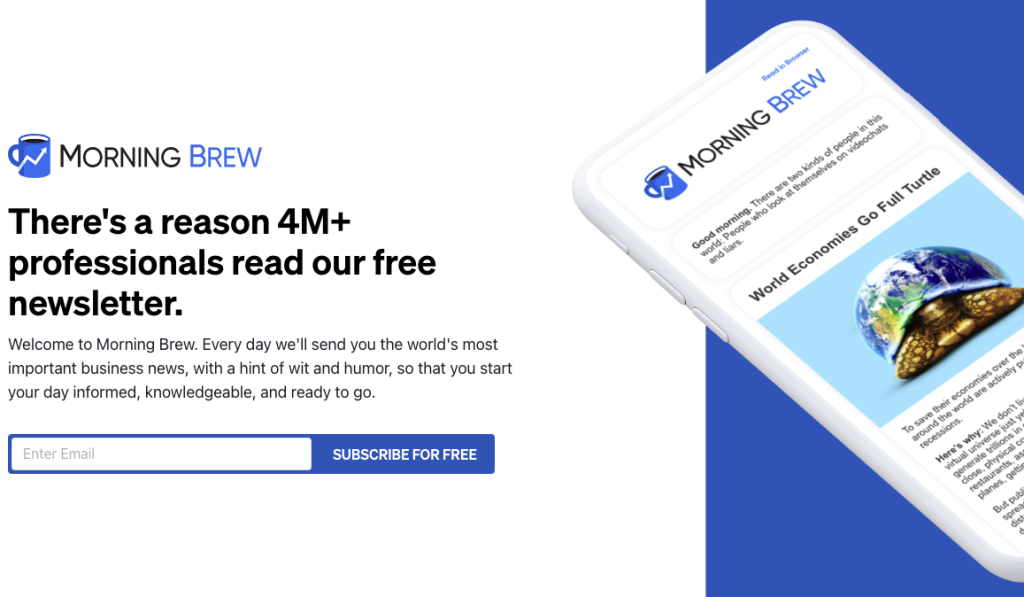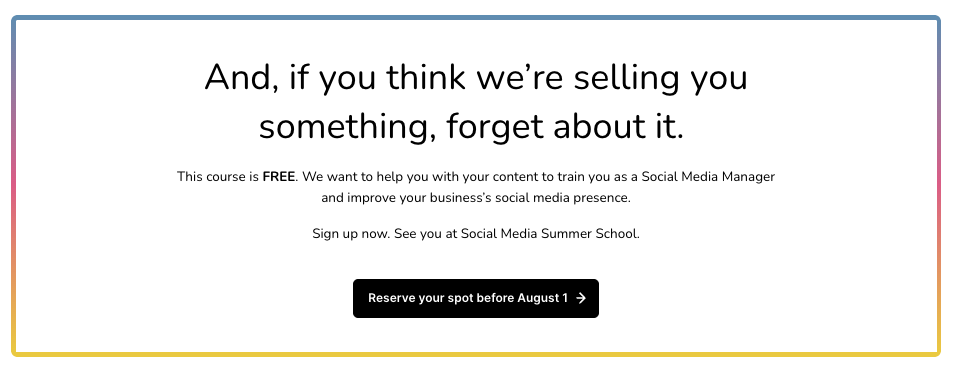How to Write Effective Calls-to-Action That Convert

Strategic copywriting is essential for any business. While persuasive writing helps potential clients understand your product or service benefits, CTA’s (Calls-to-Action) drive users to action. Without a clear direction, leads can drop out of a sales funnel thus leaving your persuasive messaging ineffective.
CTA’s guide users with simple instructions on the next steps. These are useful in each channel you promote your business: blog or website, social media captions, email marketing, in-person events, etc.
In this article, learn how to use this versatile strategy to influence users in the right direction, creating a more seamless user experience and converting leads into paying customers.
💡Want to learn more about copywriting for social media? Read this article, with 7 “magic” formulas to capture your audience.
Call-to-Action Meaning in Marketing
A Call-to-Action (CTA) is an instruction given to visitors or potential clients on your website, social media, email, or any other content, to complete a desired action.
CTA’s are normally single phrases or imperative sentences that lead visitors to take action: buy, register, sign up, subscribe… to name a few. The versatility of CTA’s makes this tool so impactful. Whether you’re building your customer base or processing a sale, CTA’s make the next path clear for leads.
Many CTAs are presented as “buttons” when they are used to hyperlink content to another landing, checkout, registration, or sign-up page. Brands can calculate CTRs (Click-through rate) with this strategy and capture which users complete this action.
What can a CTA be used for?
While many think CTA’s are only valuable for sales-oriented content, this isn’t always true. Here are a few ways CTA’s can be used:
- Drive traffic to your website or landing page: Directing users to your website or landing page allows them to connect and learn more about your company.
- Capture leads: Whether you direct users to your website or a specific landing page, track who has visited the page and if they have completed the desired action. This can reveal re-targeting opportunities for the future.
- Create a seamless buying experience: Leading users directly to a registration or checkout page offers a smooth buying experience, in which they are more likely to follow through. The more steps, the more likely they will drop off.
- Increase new leads and brand exposure: Including CTA’s into your content gives users more ways to interact with and understand your brand, through their unique navigating.
Where should you include CTA’s?
CTA’s can be included in any content and platform you use to promote your brand.
- Website or landing page: When presenting your products or services, include CTA’s across each of your website sections. This offers visitors multiple opportunities to click through and engage with more of your content or take action. If you have a blog, include CTA’s to increase CTRs and capture readers.
- Email campaigns: Emails are another important place to insert CTA’s, especially if they have a limited promotion. Ensure these stand out in the email and relate to the email message.
- Social media content: While the obvious choice is to include CTA’s in social media captions, these can also be embedded within the content. CTA’s don’t have to be written actions but can be influenced verbally.
- Links-in-bio: If you use link-in-bio tools for your social media bios, host multiple links on one page to promote multiple campaigns simultaneously.
- Advertising campaigns: CTA’s in campaigns are essential for achieving your goals. Include a CTA button to direct users seamlessly to a landing, checkout page, etc.
5 Tips to Using Calls-to-Action
There is no “one way” to write or use CTA’s. Since they are so adaptable, they can be used and crafted in numerous ways. However, the end goal is for users to complete a desired action, so with that in mind, a successful CTA means a high CTR rate and a high conversion rate.
Keep it short and clear
CTA’s are meant to be imperative statements that persuade someone to do something. Including action phrases is effective, and doesn’t need to be dragged on. Phrases like “join”, “call”, “shop”, and “register” use clear language that easily registers with viewers.

Active voice is your ally
Stating what you want your audience to do, in an active manner, will create more effective CTA’s. Passive voice is when the subject of a sentence receives the action of the verb rather than acting.
For example, these are all active voice CTA examples:
- Shop and buy the $15 collection now!
- Sign up for the course today.
- Register for free.
- Play and win.
- Complete the survey to learn more.
- Subscribe and receive the newsletter each week.
Understand what your ideal audience needs
Creating specific CTA messaging related to your audience’s pain points can increase the rate of high-quality conversions. As the brand, present yourself as the solution for your clients. With this in mind, think about unique offers for your clients.
CTAs don’t always have to be sales-driven and can be used to foster client relationships. For example, can you offer clients resources? E-books? Courses? Consider addressing their pain points and offer a solution. Consider offering multiple options with your CTA’s, depending on what you’re offering.

Incorporate your value proposition
Differentiating yourself online is just as important as presenting your unique value proposition. Presenting your company’s main benefit, even if just one word, can resonate with users.
A formula to create a CTA including your value proposition follows:
Action verb + main benefit

Include a sense of urgency
If you are running a timely campaign, creating a CTA with a sense of urgency will encourage users to act faster. For example, if you have a sale that ends, a CTA such as, “Shop before the sale ends” users know to capitalize on this promotion before it’s gone.

CTA’s are one of the most effective ways to capture and encourage users to convert or take action. We probably see CTA’s every day – even if we don’t notice them. They are an easy way to guide potential clients through the buying process.
Consider using CTA’s in your content marketing strategy to promote your business and continue selling, in effective, non-intrusive ways.

